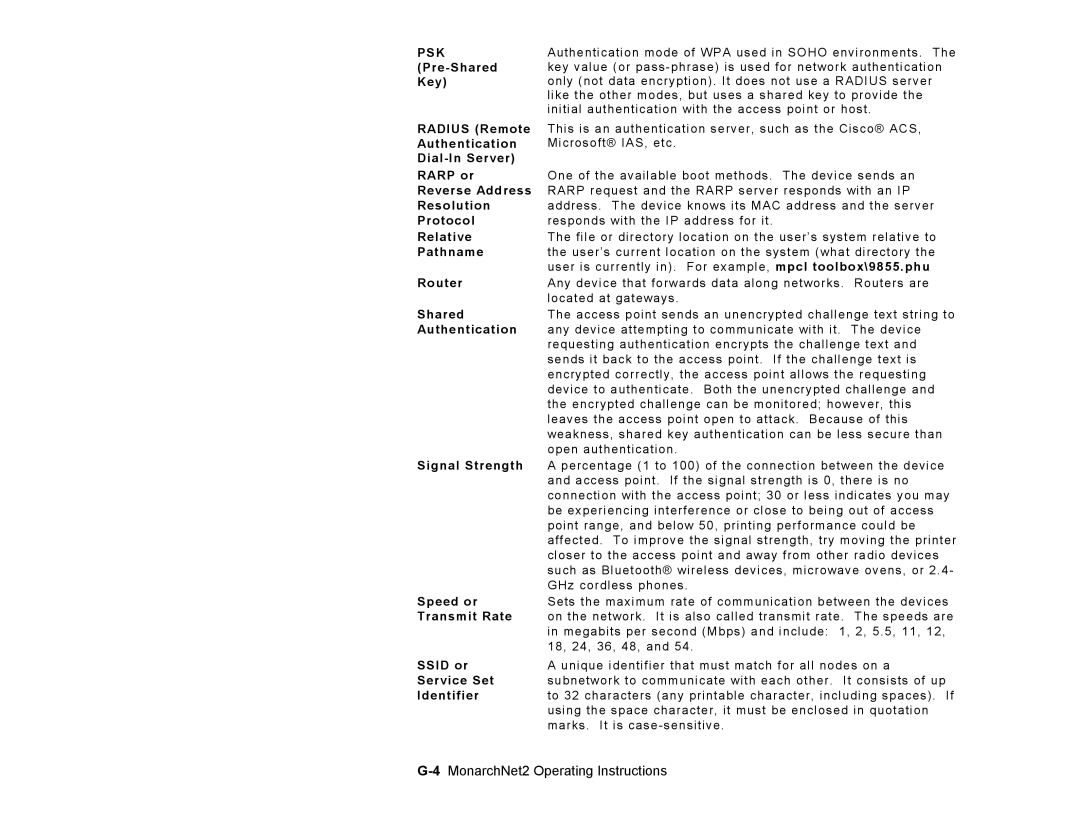PSK
(Pre-Shared Key)
Authentication mode of WPA used in SOHO environments. The key value (or
RADIUS (Remote | This is an authentication server, such as the Cisco® ACS, |
Authentication | Microsoft® IAS, etc. |
| |
RARP or | One of the available boot methods. The device sends an |
Reverse Address | RARP request and the RARP server responds with an IP |
Resolution | address. The device knows its MAC address and the server |
Protocol | responds with the IP address for it. |
Relative | The file or directory location on the user’s system relative to |
Pathname | the user’s current location on the system (what directory the |
| user is currently in). For example, mpcl toolbox\9855.phu |
Router | Any device that forwards data along networks. Routers are |
| located at gateways. |
Shared | The access point sends an unencrypted challenge text string to |
Authentication | any device attempting to communicate with it. The device |
| requesting authentication encrypts the challenge text and |
| sends it back to the access point. If the challenge text is |
| encrypted correctly, the access point allows the requesting |
| device to authenticate. Both the unencrypted challenge and |
| the encrypted challenge can be monitored; however, this |
| leaves the access point open to attack. Because of this |
| weakness, shared key authentication can be less secure than |
| open authentication. |
Signal Strength | A percentage (1 to 100) of the connection between the device |
| and access point. If the signal strength is 0, there is no |
| connection with the access point; 30 or less indicates you may |
| be experiencing interference or close to being out of access |
| point range, and below 50, printing performance could be |
| affected. To improve the signal strength, try moving the printer |
| closer to the access point and away from other radio devices |
| such as Bluetooth® wireless devices, microwave ovens, or 2.4- |
| GHz cordless phones. |
Speed or | Sets the maximum rate of communication between the devices |
Transmit Rate | on the network. It is also called transmit rate. The speeds are |
| in megabits per second (Mbps) and include: 1, 2, 5.5, 11, 12, |
| 18, 24, 36, 48, and 54. |
SSID or | A unique identifier that must match for all nodes on a |
Service Set | subnetwork to communicate with each other. It consists of up |
Identifier | to 32 characters (any printable character, including spaces). If |
| using the space character, it must be enclosed in quotation |
| marks. It is |
